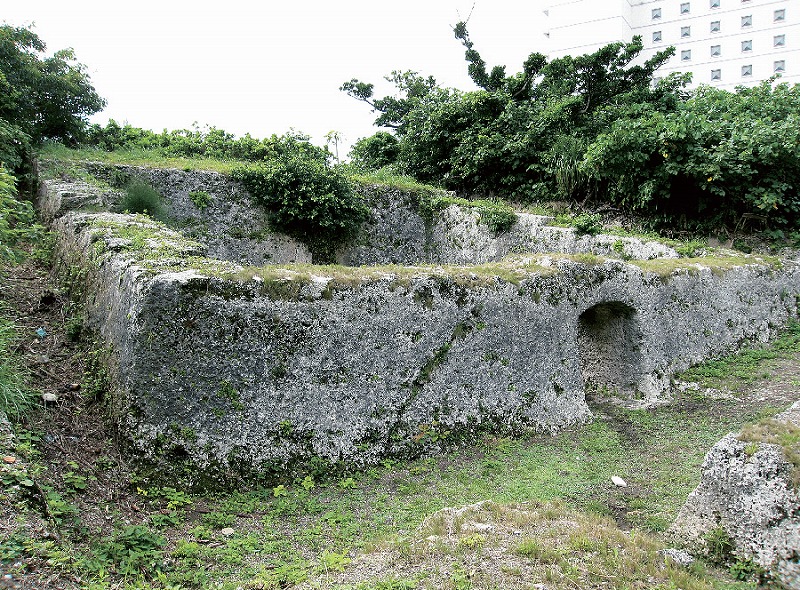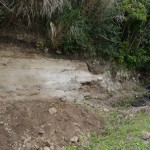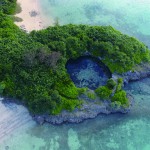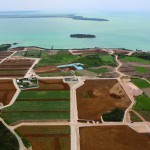【Designated by the City:Structure】Nishitsuga-Baka Tomb
The Masumo-uji clan tombs are aligned, east and west, and are commonly referred to as Tsuga-Baka tombs. Tsuga means “masu,” the square container used to measure liquids, and the Tsuga-Baka is said to have been named so because of it square shape. On the other hand, there is another lore on the origins of its name; it took a lot of laborers to dig the tomb, costing one masu full of money to dig a size of a masu. The characteristics of the Tsuga-Baka can be seen in how the rock is dug, the arched gate, and how there are dry moats dug in the surroundings.
Generally, roofed entrances to tombs are made with piled stones topped with a single slab of stone for a roof, but it is rare to find such a path where the rock is dug the way it is here, and how the front rock is dug to function both as a gate and a route to the open area by the tomb. In addition, the dry moats dug around the surroundings is a design unseen anywhere else in Miyako. According to lore, the construction of the Tsuga-Baka was initially undertaken only on the west side. It took a great sum of funding to construct it, but just before completion, a carcass of a cow was discarded at the site. Offended by the incident, they constructed another on the east side, same in design and scale. It is not clear if both sites were used from the time of its completion, but over the years, both are now in use. The one on the east was heavily damaged from bombardment from US warplanes in the last World War, but the one on the west still stands proud with its original beauty.
It is said that the Masumo-uji clan (with the clan character of昌) are descendants of an exiled criminal from Shuri. Since Masanobu in 1685, in Uruka, there have been a total of six chiefs from the clan, boasting a strong lineage of leaders in Miyako. The lore, “one masu full of money to dig a size of a masu” for the clan’s tomb, may not just be a lore after all for this powerful clan.
≫View on a Google Map
 宮古島アプリの綾道(あやんつ)トップページ
宮古島アプリの綾道(あやんつ)トップページ 宮古島アプリの綾道(あやんつ)の内容
宮古島アプリの綾道(あやんつ)の内容 宮古島の3つのルート
宮古島の3つのルート 宮古島市長のあいさつ
宮古島市長のあいさつ 宮古島文化遺産紹介
宮古島文化遺産紹介








